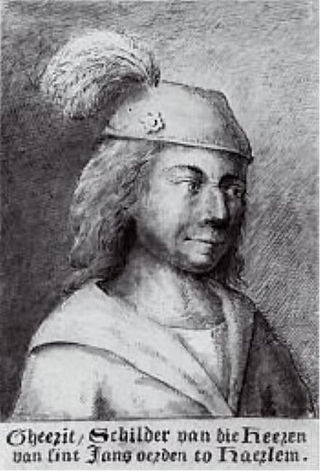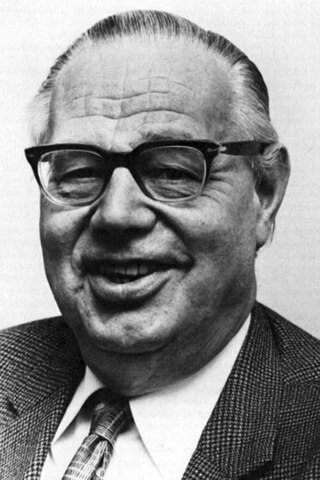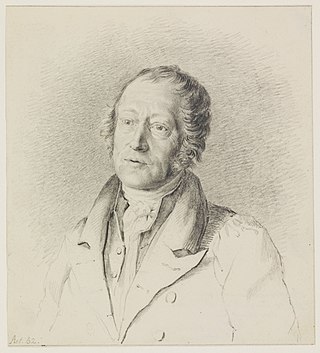
Adriaen van Ostade was a Dutch Golden Age painter of genre works, showing everyday life of ordinary men and women.

Nicolaes Pieterszoon Berchem was a highly esteemed and prolific Dutch Golden Age painter of pastoral landscapes, populated with mythological or biblical figures, but also of a number of allegories and genre pieces.

Teylers Museum is an art, natural history, and science museum in Haarlem, Netherlands. Established in 1778, Teylers Museum was founded as a centre for contemporary art and science. The historic centre of the museum is the neoclassical Oval Room (1784), which was built behind the house of Pieter Teyler van der Hulst (1702–1778), the so-called Fundatiehuis. Pieter Teyler was a wealthy cloth merchant and banker of Scottish descent, who bequeathed his fortune for the advancement of religion, art, and science. He was a Mennonite and follower of the Scottish Enlightenment.

Geertgen tot Sint Jans, also known as Geertgen van Haarlem, Gerrit van Haarlem, Gerrit Gerritsz, Gheertgen, Geerrit, Gheerrit, or any other diminutive form of Gerald, was an Early Netherlandish painter from the northern Low Countries in the Holy Roman Empire. No contemporary documentation of his life has been traced, and the earliest published account of his life and work is from 1604, in Karel van Mander's Schilder-boeck.

J(oh)an and Jacob van Huchtenburg were two Dutch Golden Age painters in the second half of the seventeenth century. Both brothers were natives of Haarlem, moved to Paris, but died in Amsterdam. The main source about their lives is from Arnold Houbraken. Some of the information from the 19th century is contradictive.

Jan Lievens was a Dutch Golden Age painter who was associated with his close contemporary Rembrandt, a year older, in the early parts of their careers. They shared a birthplace in Leiden, training with Pieter Lastman in Amsterdam, where they shared a studio for about five years until 1631. Like Rembrandt he painted both portraits and history paintings, but unlike him Lievens' career took him away from Amsterdam to London, Antwerp, The Hague and Berlin.

Jan de Bray was a Dutch Golden Age painter. He lived and worked in Haarlem until the age of 60, when he went bankrupt and moved to Amsterdam.

Cornelis Corneliszoon van Haarlem was a Dutch Golden Age painter and draughtsman, one of the leading Northern Mannerist artists in the Netherlands, and an important forerunner of Frans Hals as a portraitist.

Gerrit Adriaenszoon Berckheyde was a Dutch Golden Age painter, active in Haarlem, Amsterdam, and The Hague, who is best known today for his cityscapes.

Job Adriaenszoon Berckheyde was a Dutch artist of the 17th century, active in Haarlem, Amsterdam, and The Hague.
Gerrit Noordzij was a Dutch typographer, typeface designer, and author. He started teaching letters and calligraphy at the Royal Academy of Art in The Hague in 1960. Motivated to make type accessible to his students, he identified the stroke of the pen as the central idea in the making of letter forms. What began as a method to make his students into better graphic designers grew, in various iterations and publications, into a comprehensive approach to type design. The contrast cube became an iconic model of his ideas. Noordzij recognised the possibilities of the computer in type design early on. He encouraged his students to not only study the pens and their shapes, but also adopt a critical view on making digital tools. By the time Noordzij retired in 1990, his methods were in use in type classes and workshops all over the world. His book The Stroke has been translated in English, German, French, Italian, Spanish, Portuguese, Korean, Croatian and Russian. And of course, it has been the practical and theoretical foundation of the KABK TypeMedia master for over twenty years.

The Haarlem Guild of Saint Luke was first a Christian, and later a city Guild for various trades falling under the patron saints Luke the Evangelist and Saint Eligius.

Wybrand Hendriks was a Dutch painter, primarily known for his portraits, and the concierge of the Teylers Museum.
Hendrik van Borssum Buisman, was a 20th-century painter from the Northern Netherlands who became the keeper of the print room or art cabinet at Teylers Museum in 1913.

The Eerste Schilderijenzaal, or Painting Gallery I, is one of two art gallery rooms in Teylers Museum and is the oldest art gallery for contemporary Dutch art in the Netherlands. It was built onto the back of Teylers Oval Room in 1838. It was the young museum's first exhibition space for paintings and could be entered through the Oval Room, which was itself located behind the Fundatiehuis, the former home of Pieter Teyler van der Hulst.

Gerrit David Gratama, was a Dutch artist, writer, and director of the Frans Hals Museum.

Kraantje Lek is a pancake restaurant and former inn in Overveen, Netherlands, on the Duinlustweg.

Jan Gerrit van Gelder was a Dutch art historian.

Gerrit Lamberts (1776–1850) was a Dutch painter and curator of the Rijksmuseum when it was located in the Trippenhuis.

















